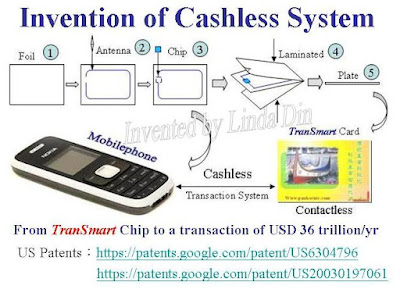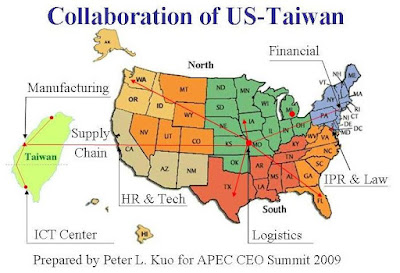Investing TES
Prepared by Peter Li-Chang Kuo
(Chinese)
K-Horn
Science Inc. (KSI) was an incubator which established in 1979, launched the BSC
Angel Fund in
We
commissioned a national academic institute to perform an intellectual property
(IP) valuation. The result: limited edition VAM hardware alone could yield USD
12.5 billion in profit, and the value of VAM’s "virtual
asset management" reached astronomical figures-- during the
COVID-19, VAM of TES has consistently generated tens of trillions of dollars
annually. According to the UN’s WIPO and the Berne Convention, KSI holds
exclusive rights to TES’s high-value IP portfolio.
TES
– The eStore System is “the world’s first contactless
smart transaction and digital economy platform,” invented in 1986 as an
innovative industry solution to unemployment. TES integrates contactless
cashless payment, Virtual Asset Management (VAM), intelligent supply chains,
AI, and financial flow management. After 11 years of development, it catalyzed
the 1998 APEC E-Commerce Bill, becoming the foundation of global e-commerce.
From 1997 to 2009, we promoted TES at APEC for 13 years. It has since become the highest value-creating invention in human history, especially during the COVID-19 pandemic, when it generated immense benefits: over 1.5 billion people worked at home to earn world money, and “USD 36 trillion in annual cashless transactions.”
Fig 3: The cashless system
we invented has become the mainstream of global transactions
TES – The Most Valuable Invention in Human History
TES now drives the digital economy as a powerful engine, and we invite visionary investors to co-create a new global economic landscape.
1. How Can You Participate?
1) Following the principles of small-scale,
diversified, and limited participation;
2) Each individual may invest between $5,000 to
$50,000 USD;
3) Funds will be used to launch KSI’s multi-IP
monetization initiatives.
2.
How Will You Receive Returns?
1) Expected Return Mechanism:
(1) First projected IP licensing contract: $500
million USD;
(2) 10% of revenue will be allocated to investor
returns;
(3) The first-round returns may already cover your
full investment.
2) Sustainable Cash Flow & Profit Sharing:
(1) Future income will come from follow-up licensing
and ICT financial services;
(2) Investors will enjoy ongoing profit-sharing;
(3) Early-phase investors are entitled to both
dividends and equity.
3. Why Now?
We
are leading a global revolution in currency, distribution, industry, and
employment. TES’s core component—the “
You
are invited to secure your early-stage equity stake in the most promising IP
industry of the future—with the smallest investment, gain a position in a
system designed for sustainable and exponential growth.
The High Intellectual Property
Value of TES
On
January 27, 2001, our companies and residences in both
Mr.
Jiang Zemin personally signed an invitation for us to attend the 2001 APEC in
At
the 2009 APEC CEO Summit, U.S. President Barack Obama invited us to
TES
and the “GENIUS Act”
TES
(The eStore System) is the world’s first contactless, cashless transaction and
"Virtual Asset Management" (VAM)
system. Invented in 1986, it laid the foundation for the 1998 APEC E-Commerce Initiative.
Since 2009, virtual currencies have flourished, and cashless transactions have
grown into the world’s largest market, now expanding by tens of trillions of
USD annually. In June 2025, the U.S. Congress passed the "GENIUS Act,"
which intersects with TES’s VAM across policy goals, technical features, and
future development. This document explores their convergence in three
dimensions:
I.
Overview of the GENIUS Act
1.
The GENIUS Act (Generating Enhanced New Investment Using Science Act) was
introduced by the U.S. Congress to:
1) Encourage scientific innovation and technology
commercialization;
2) Strengthen mechanisms to convert intellectual
property (IP) into real economic value;
3) Provide tax incentives and venture capital
advantages;
4) Support high-tech enterprises (such as AI, FinTech,
and DeepTech) in rapid market entry.
2.
Key focus areas include:
1) Digital economy,
2) Blockchain,
3) IP monetization,
4) Cashless infrastructure,
5) Cybersecurity,
6) AI-powered commerce, etc.
II.
Intersections between TES's VAM and the GENIUS Act:
1) Contactless, cashless transactions foster digital
economy and FinTech innovation—goals aligned with GENIUS’s push for digital
payment infrastructure.
2) VAM supports IP-backed asset creation, enabling a
platform for IP valuation, asset conversion, and financial market integration.
3) TES’s eStore +
4) Invented in 1986 and ratified through APEC in 1998,
TES is the mother of today’s virtual currency and blockchain movement. It can
be filed as a “cross-century tech-economic commercialization model,” eligible
for GENIUS support.
5) During the pandemic, TES-enabled cashless
transactions hit $36 trillion, and continue to grow annually by tens of
trillions—providing GENIUS with a proven success case and rich data to support
its policy goals.
III.
Future Policy Linkage and Action Recommendations
1.
Integrating IP Commercialization with VAM:
1) GENIUS's emphasis on IP monetization can be
realized concretely through VAM.
2) TES can be presented as a real-world application
model for GENIUS implementation.
2.
Alignment with the MAGA Agenda:
1) Combine GENIUS support for digital asset
standardization and secure frameworks.
2) Propose a
3.
Use GENIUS mechanisms to apply for innovation funding aimed at:
1)
2) Technology security,
3) Tech transfer into the American market.
Conclusion
In the 1990s, due to limited public understanding of
advanced technologies, we first created the contactless smart chip card and its
Transaction Reader Device (TRD), and then created VAM—a convergence of "Smart Vending, ATM, and Mobile Communication"—to
demonstrate a cashless system. We also developed a comprehensive “Transmission Supply Chain Management” (TSCM) software
system, which evolved into the "Virtual Asset Management" (VAM)
platform. VAM has since led the global trend in virtual currencies, reaching
USD 28 trillion in transaction volume in 2024.
The TES-VAM system is not only a technological
innovation, but a proven economic engine for virtual asset governance and
transformation. The legislative intent of the “GENIUS
Act” directly supports breakthroughs like TES—both in technical
architecture and commercial models.
If TES’s innovation, policy alignment, and economic
impact are effectively demonstrated, it could become a flagship case of the “GENIUS Act,” helping the
References:
Din, L. (2001). A Lady of Rich Taiwan (A Daughter of the Defense Employee).
Din, L. (1998, September 1). Fax message: APEC organizer ASLI thanks Linda Din for supporting the forum with practice and action. (One of the most important documents in the history of E-Commerce)
When Linda Din served as the keynote speaker at the Task Force meeting on September 7, 1998, she proposed launching the "E-Commerce Steering Program" through TES (The eStore System), a bold initiative that profoundly transformed the global tech-economic landscape.
Peter Li-Chang Kuo, the author created
【Copyrights reserved by Li-Chang Kuo & K-Horn Science Inc.】
External Links:
https://patents.google.com/patent/US6304796 (VAM)
https://patents.google.com/patent/US20030197061
(Shopping System)
https://patents.google.com/patent/US20030107468
(Entry Security Device)
https://patents.google.com/patent/US20040054595A1 (ETC)
https://ldinventions.blogspot.com/2022/01/127.html (A Universal Cashless System)
https://khornhb.blogspot.com/2023/10/1011.html
(K-Horn Science Inc.)
https://khornhb.blogspot.com/2023/11/1110.html
(K-Horn & APEC)
https://khornhb.blogspot.com/2023/12/1208.html
(K-Horn’s SRI)
https://khornhb.blogspot.com/2024/01/105.html
(K-Horn’s PCM)
https://klcapec.blogspot.com/2024/05/515.html
(The Best Practice)
https://klcapec.blogspot.com/2024/06/609.html
(
https://lckstory.blogspot.com/2024/07/704.html
(Apollo)
https://khornhb.blogspot.com/2024/07/721.html
(Paving the Way for AI)
https://lckstory.blogspot.com/2024/08/818.html
(Disney Intelligent System)
https://ksibusiness.blogspot.com/2024/10/1028.html (SRI & Global
Channel-TES)
https://plckai.blogspot.com/2024/11/1103.html (On Ethics & Morality of the AI Era)
https://klcapec.blogspot.com/2024/11/1112.html
(Peru APEC)
https://pkproposal.blogspot.com/2024/11/1127.html
(A Proposal to President Trump)
https://pkproposal.blogspot.com/2024/12/1208.html
(2ND Proposal “IIA-TES”)
https://pkproposal.blogspot.com/2024/12/1220.html (TES & MAGA)
https://pklctrips.blogspot.com/2024/12/1231.html
(Kuo’s Journey for 6 Decades)
https://pklctrips.blogspot.com/2025/01/111.html
(The Photonics Revolution)
https://pklctrips.blogspot.com/2025/01/121.html
(Einstein’s Enlightenment)
https://pklctrips.blogspot.com/2025/03/323.html
(Getting to Know Trump)
https://pklctrips.blogspot.com/2025/03/331.html
(Cijin Grand Maritime Project)
https://pkproposal.blogspot.com/2025/04/409.html
(A Letter to President Trump)
https://ksibusiness.blogspot.com/2025/04/413.html
(Top Secret)
https://pklctrips.blogspot.com/2025/04/416.html
(
https://pkproclaims.blogspot.com/2025/04/422.html
(How the American Elite Think)
https://lckstory.blogspot.com/2025/04/428.html
(The Inventions of Linda Din)
https://pklctrips.blogspot.com/2025/05/502.html
(Theological Practice in Precision Industry)
https://lckstory.blogspot.com/2025/05/514.html
(Li-Chang Kuo’s Caring Technology)
https://lckstory.blogspot.com/2025/05/519.html
(520 Presidential Inauguration Day)
https://tesoperation.blogspot.com/2025/06/605.html
(Greatest Business Opportunity)
https://pklctrips.blogspot.com/2025/06/612.html
(Grand Maritime Initiative)
https://klcapec.blogspot.com/2025/06/618.html (TES & APEC)
https://lckstory.blogspot.com/2025/06/622.html
(Crystal Soap & Precision Manufacturing)
https://plcpolitics.blogspot.com/2025/06/624.html
(Qualities of A Supreme Leader)

















留言
張貼留言